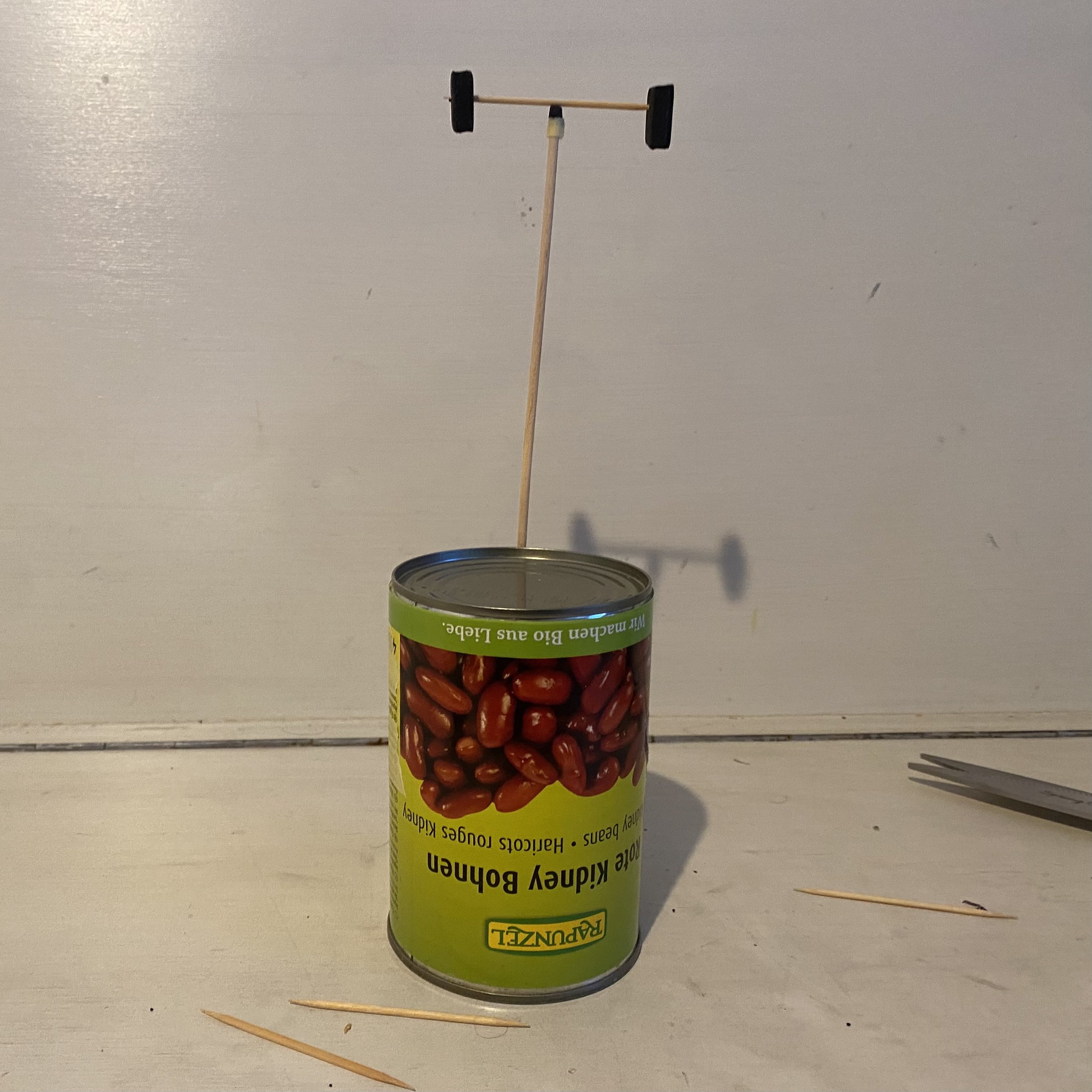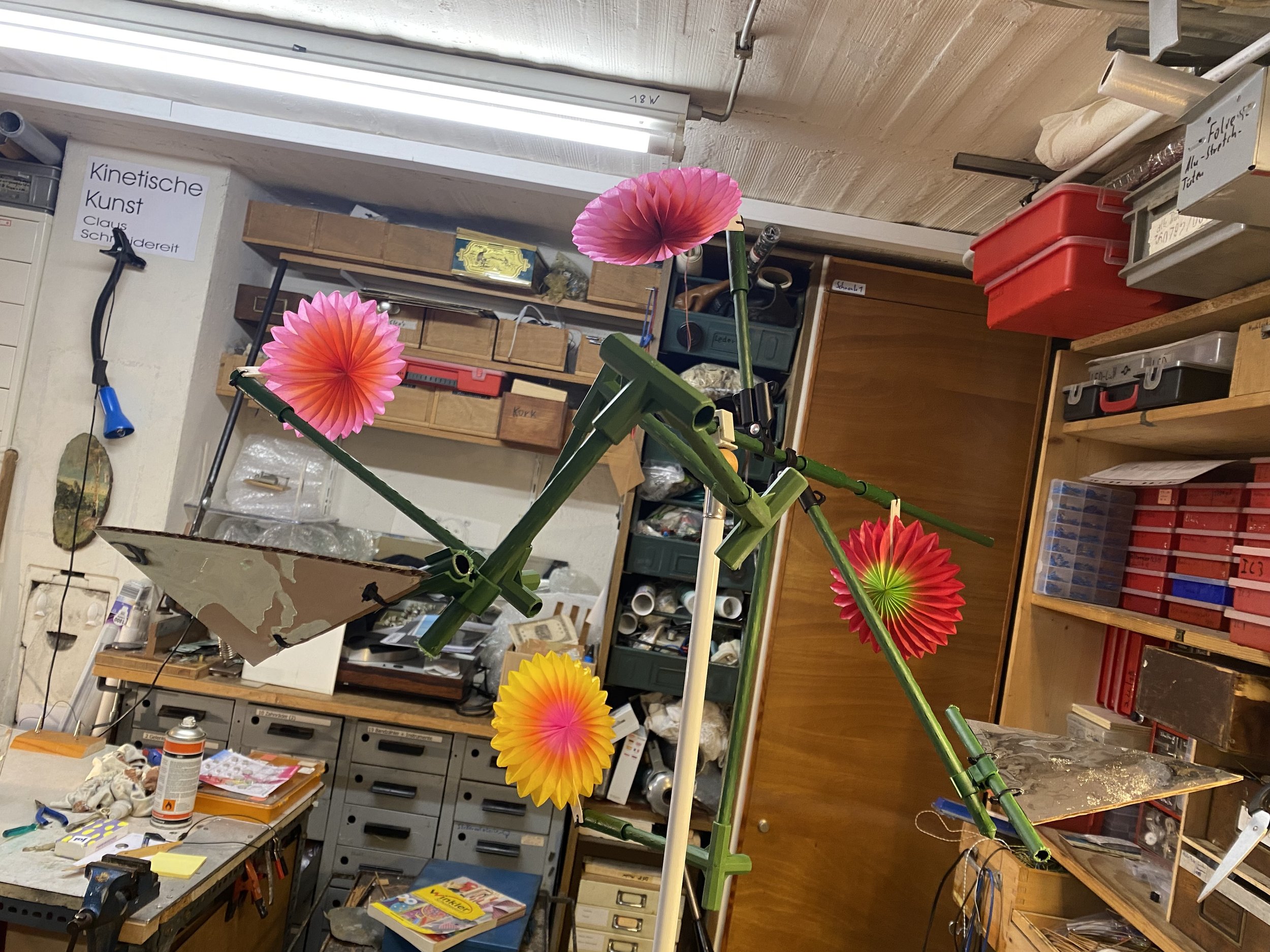Material Explorations in Balance
I’m currently partnering with the Tinkering Studio at the Exploratorium on a project to develop, test and fabricate new unfacilitated “tinkerable” experiences (or “uftes”). For this project we’re supported by the LEGO Group to both create the “uftes” as well as to describe and share our process. It’s important to recognize that for us, the prototyping process embodies the tinkering spirit, meaning that there’s lots of experimentation, following weird ideas and engaging in deep reflection about next steps.
For the project, we’ll be exploring light/shadow, constructions, mechanisms and we’ve already started with an exploration focused on balancing constructions and kinetic sculptures. I’ve been hanging out in the amazing workshop of kinetic artist Claus Schneidereit here in Freiburg who also is helping with some technical expertise. I wanted to share some of the ways we’ve been testing materials to find the right combinations that allow for participants to intuitively understand how the parts work, develop unique ideas and explore complex themes.
One of the first elements that I wanted to try were simple, small scale foamie and toothpick creations so that I could examine the potential ‘wide walls’ of limited materials. An activity having ‘wide walls’ means that each person can make something unique that reflects their own ideas and process.
One of the things that we’ve realized over the years is that sometimes a constrained set of parts can actually increase the creativity as participants have to imagine different ways to use the same elements.
Another set of parts that we’ve explored are PVC pipes and boba tea straws. Building with this combination of materials helped us to identify another key quality of the experience: the ability to make small changes (in this case by sliding the larger pipe over the straw) that can have big effects on the final product.
A challenge of the activity is figuring out how to create pieces that can be moved easily but also stick in place when needed. For the PVC balancing constructions, we pounded nails into the ends of the pipes which created a small hole that worked as a stop to hold the boba straw in place.
Another thing that we’re thinking about is how to add characters or narrative to the activity to draw more people into the experience. Making faces seems to be a compelling motivation for people of all ages. We started playing with this idea by adding hand drawn elements to the structures.
Eventually we had the idea to put small velcro pieces on the drawings so that we could interchange and remix them, creating Picasso-style faces with mismatched parts.
As always in the prototyping process, weak points can emerge when projects are taken to complex ends. We noticed that when the structures got too large, the boba straws alone aren’t strong enough to support the weight. So we tried some other solutions like putting wooden square dowels into the straws and also inside aquarium tubes that we’re the right diameter. For a later test, we got some ribbed dowel which can fit directly into the PVC tubes.
The balancing point is another really important thing to figure out in the system. We tried a couple of different solutions and ended up with a wooden ball bolted on a piece of wood. For a second prototype, we wanted to also be able to slide and move the ball so we added a little wire clamp that can be adjusted with a screwdriver as a way making fine adjustments to the placement of the balance point.
Next, we began to explore tomato stakes, that are normally used in the garden as a construction material. These elements give us a bit of a smaller and lighter profile and there are many different types of connection points available. We collected a set of extender pieces, joints that connect in a variety of angles and paired clips that allow for horizontal extensions. The ribbed sides of the garden stakes help the pieces stay in place but also give us the ability to change the design more easily.
We noticed that the uniform green of the tomato stakes and connector pieces leads to less interesting looking sculptures. I added colorful pop-up paper flower fans and mirrored cardboard pieces which added some color, light and reflection to the pieces and created a sense of dimensionality. These elements are fairly light so they can be added without disturbing the overall layout of the design too much.
As the materials for the construction set began to come into focus, we moved to a more wild challenge: making the sculpture move by adding a propeller motor or offset weights. We made a couple of discreet parts to be added to the sculpture using a small hobby motor and battery pack. These prototypes suggest future complete units that can be fabricated as part of the exhibit development process.
When we attached the motor with the propeller at the right angle, the balancing sculpture spun neatly around the balancing point. Right away, a more compelling reason to build a balance sculpture emerged and we think that watching the dramatic movements could be an engaging entry point for more visitors.
And even more interesting concept was adding a little slow spinning motor with an offset weight attached to the axel. Just the weight of some hardware was enough to throw the sculpture in and out of balance. I’m really interested in this idea because it feels like a direct way to play with the phenomena of equilibrium, weight and motion. It's really beautiful to see the rate of movement, the different angles and the pendulum-like swinging when the sculpture gets in a pattern than amplifies the movement of the offset weight.
The next steps for these balance explorations is to work on creating a set that can be played with by kids and families so that we can observe their reactions. I’m working on putting together an open-ended kit of parts, making some of the more complicated elements more sturdy and thinking about examples and environments. Some of the questions and ideas that have been coming up with regards to the materials selection can be applied to the other “tinkerable” experiences and I’m looking forward to more prototyping with the Tinkering Studio team and other collaborators in the new year.
The LEGO Playful Learning Museum Network initiative is made possible through generous support from the LEGO Group.

























